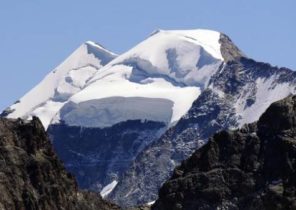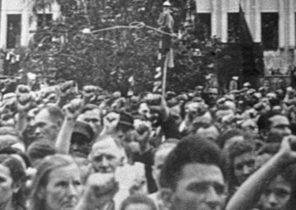
This is one of the least known wonders of the world. Abandoned and dilapidated, it almost 5000 years languished in the Irish countryside. But archaeologist enthusiast found this building, the mystery is revealed only once a year — the winter solstice.
A twist happened! In the six months since the Midsummer day was becoming shorter. But the time of the winter solstice, and that means the sun is at the lowest point, and this was the shortest day of the year. And to the North of the Arctic circle the sun never appears above the horizon.
The winter solstice was celebrated since prehistoric times. Today it coincides with Christmas plus or minus a couple days. The reason is the miscalculation, discovered in the year 325.
Best place in the world for the celebration of the winter solstice the stone age mound of Newgrange in Ireland, built in the Neolithic period 4500-5000 years ago.
But our story began in 1961. The ancient structure of the stone age Newgrange, or BRU-na-Boyne, lay in ruins. The witness understood that this was exceptional — building, tomb, whose age is probably greater than the age of the Egyptian pyramids and Stonehenge. Something created the Celtic sun God Dagdas.
Among the visitors to the ruins was Professor of archaeology Michael J. O’kelly (Michael J O’kelly), who immediately realized that Newgrange should be investigated and, perhaps, to restore.
Work started in 1962 and led to a surprising discovery. During the expedition, O’kelly learned that, although the monument lies in ruins about him, a lot of beliefs. According to one legend, the tomb of Newgrange was hiding a secret that could unravel only a single day of the year.
On this day the sun illuminates the inside of the building and falls on the stone at the far end of the corridor.
But when? And if this is true or just a myth?
First, O’kelly decided that wonder of the world should occur at the summer solstice. But no living man had seen the phenomenon with my own eyes.
21 December 1967 was the day when archaeologists finally cleared the whole passage through the building. Early in the morning, O’kelly went to Newgrange and entered the room, stopped right in the middle of the dark corridor. It brought back the intuition, but not wrong?
 © Wikimedia / the stone age mound of Newgrange in Ireland
© Wikimedia / the stone age mound of Newgrange in Ireland
It remained only to wait for sunrise. Any truth to the myth? Will light if the sun pass? Or it will set in motion the mechanism that will bring down the ceiling, and bury themselves under O’kelly?
The sun seemed at 08:58. It all happened very quickly.
“To the surprise of Professor O’kelly, the room and the passage was covered. The sun’s rays stretched along the walls and lit up everything around. The entire room, walls, floors, twenty-foot ceilings bathed in the rays of the sun,” reads one of the descriptions of the events of 1967.
O Kelly froze, stunned and fascinated by what I saw in Newgrange.
“Then it was gripped by fear that the sun-God Dagda, the Builder of the tomb, and bringing down the ceiling on his head”.
Fortunately, the Dagda was not going to do that. Leaving, Newgrange, Professor and watched how the rays of the sun left the building.
Who built Newgrange?
“I have no idea,” answers to this question Muris O’sullivan (Muiris Ó Súilleabháin) from University College Dublin page Newgrange.
The construction of the monuments of this type required a large amount of labor and a very long time, which means that there were formed large settlements. If archaeologists found these settlements would be much easier to understand why Newgrange was built.
“No, there are no signs of large settlements or villages,” the Professor denies.
In other words, Newgrange in all its brilliance and precision for a long time will remain a mystery to us.
Trip to Newgrange
For all who want to see Newgrange at the winter solstice, every year organize a lottery, a lucky winner which is a group of 20 people watching the solar phenomenon. The chances of getting a ticket are small. In 2016, received applications from 32 682 people. And to be able to log in, you have to register on the spot.
What is winter solstice?
It’s like the summer solstice, just the opposite — the shortest day of the year when the sun is at the lowest point. In the Northern hemisphere the winter solstice occurs on December 21-23, when the sun is in the Zenith over the tropic of Capricorn.
It is easy to guess that this day is celebrated throughout the Northern hemisphere. Darker will not be ahead for better times.
In Ancient Rome the winter solstice was celebrated in a big way. All week held celebrations, prayed to Saturn and other gods of fertility. In Judaism, winter solstice is the first day “tekufot-Tevet” when you can’t drink the water stored in the house. In the ancient Persian worshiped the sun God Mithras. The Vikings celebrated Yule, which could coincide with the solstice, and the pagan Christmas the Germans.
There still remains the question: why Christmas is celebrated not on the day of the winter solstice? The reason — in a calendar error, known since the IV century.
When 45 years before the onset of ad was introduced by the Julian calendar, the winter solstice just falls on December 25. But in the calendar mistake. Despite the fact that every fourth year was a leap year, the winter solstice began to move about one day ago every hundred years. In the year 325 the first Council of Nicaea it had on 22 December. And in the year 1500 generally moved on 12 Dec. Had something to do with it!
All fixed Gregorian calendar, introduced in Sweden in 1753. At the moment just canceled the last 11 days of February in the belief that during the Nicene Council of 325 was fine. Everyone who went to bed on the evening of February 17, woke up on March 1.
The problem was solved by establishing a system of leap years. For many centuries people have been refused on 29 February, except years that are multiples of four hundred. Easy and simple, isn’t it?







